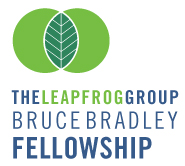Leading Through a Culture of Patient Safety
Authored by the 2022 Bruce Bradley Fellowship Class: Stacy Leick, Ashley Love, Roshini Moodley Naidoo, and Tanika Smith
Organizational culture consistently emerges as the foundational asset most favored for success with patient safety strategies. In mid-September 2022, Leapfrog’s 2022 Bruce Bradley Fellowship class experienced the culture of patient safety first-hand through immersions with valued Leapfrog Group stakeholders at St. Luke’s University Hospital in Bethlehem, PA, and Capital Blue Cross in Harrisburg, PA.
The ubiquitous culture of safety at St. Luke’s University Hospital (SLUH) was inspirational. A recipient of Leapfrog’s prestigious Top Hospital Award, every step throughout the Bethlehem campus highlighted the organization’s commitment to patient centered care and patient safety outcomes. The effort began as a quality improvement project almost two decades ago.
New hospitals joining the network quickly assimilate into the culture of excellence with the support of quality and safety directors at each site. These Directors lead by example by driving an expectation that standards are universally met. Clinical services are co-governed by an academic and administrative representative, supported by an unwavering commitment to patient safety led by one of the longest tenured hospital CEO’s in the country.
With a high volume of clinical services in Medicare bundled payments, SLUH appreciates the need for a material proportion of payments to be at risk for value-based purchasing that spur genuine improvement. For example, in nephrology, the current focus is care-coordination and documented care plans to support bundled payments and Leapfrog Group safety protocols.
At SLUH, Artificial Intelligence (AI) and predictive analytics are used to support patient safety programs. Bruce Bradley Fellows experienced a demonstration of a sepsis algorithm, enabled through the Electronic Medical Record (EMR), that allowed for patient “swarming” at the earliest worsening of a “Deterioration Index.” Patients recovering from cardiac surgery experience the convenience of remaining in their pre-surgery room and the rooms post-surgery are reconfigured for cardiac rehabilitation.
Another item that distinguished SLUH culture from others was that doctors are known by their first name and work is organized within teams that share collective accountability for patient care. The organization strives to be a five-star network by choice, instead of through regulatory nudges. Senior staff make themselves easily accessible with staff responsiveness, respect, and role modelling prioritized.
At Capital Blue Cross, the universal culture of safety is perpetuated through safety champions who run distinct high value programs across wide-ranging topics such as maternal equity improvement programs, value-based purchasing, and equity data governance. When inquired about what was driving the organizational wide focus on equity, leaders within the organization said, “because it’s the right thing to do.”
It was impressive to experience how the culture of safety translated seamlessly into organizational strategies. In particular, the depth and structure of the organization’s equity data aggregation and analysis stood out. Equity data is managed as an organizational pivot involving the identification of meaningful metrics, high yield data sources, data governance, and building and evaluating data models that enable improving patient strategies.
Capital Blue’s Health Equity Readiness Committee and a Diversity, Equity, and Inclusion (DEI) Committee work collaboratively to facilitate data guided conversations, such as the association between equity, cost and health status, all with the support of Blue Cross Blue Shield. In the role of a “good neighbor,” Capital accepts regional level data beyond their book of business to be submitted by hospitals for benchmarking and their value-based purchasing program. Within their maternal health program, they are reflecting on the role of community-based caregivers to bridge inherent cultural barriers.
These organizations, through the daily pursuit of excellence, offer valuable insights of the importance of organizational culture as the compass to build, grow, and enhance patient safety and quality strategies. We urge Leapfrog Regional Leaders across the country to facilitate hospital and provider visits to gain a better understanding about various advances in patient safety and the tools used that contribute to hospitals, like St. Luke’s University, in becoming a Leapfrog Top Hospital.
Stacy Leick is the Communications Director for The Economic Alliance for Michigan. Ashley Love is the Director of Health and Benefits of Willis Towers Watson, Roshini Moodley Naidoo is the General Manager of Discovery Health. Tanika Smith is the Director of Communications for Teamsters Health & Welfare and Pension Trust Funds of Philadelphia and Vicinity.
